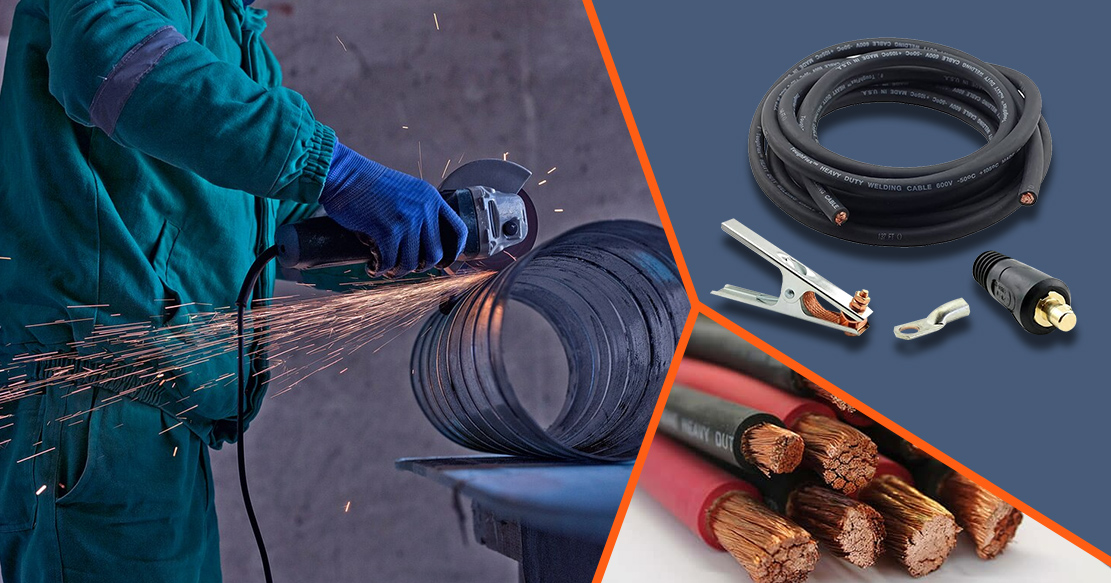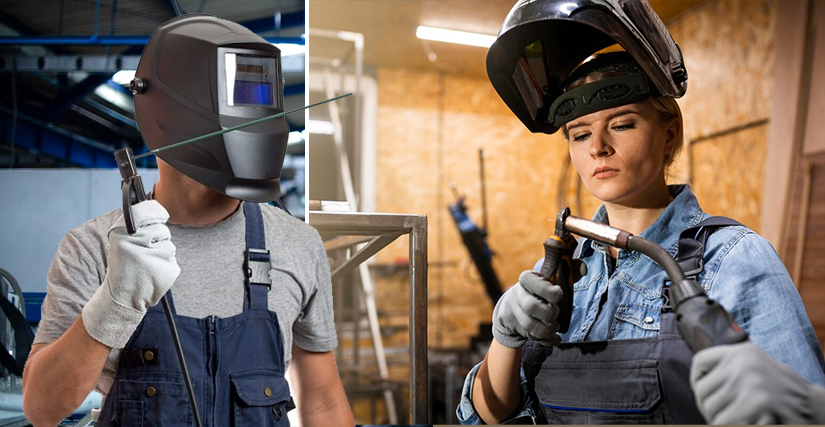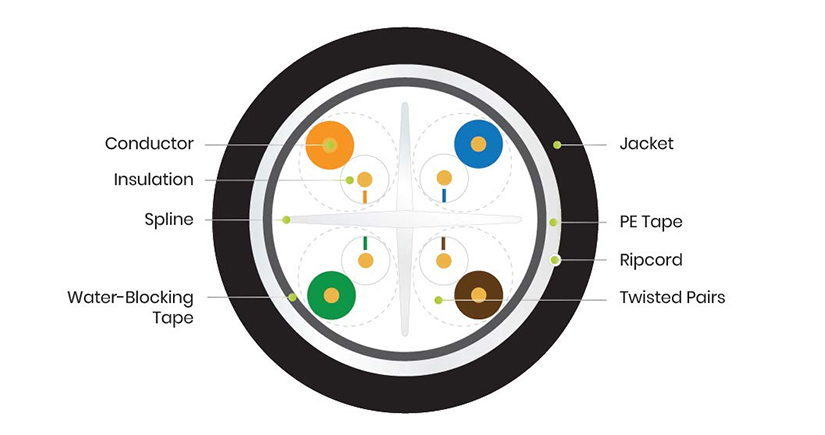
Welding Cables- A Crucial Aspect of Welding System
Welding cables are vital components of any welding system as they provide electrical power to electrodes and torches in various welding processes. These cables are made of copper conductors and neoprene or EDPM insulation, ensuring the appropriate performance of the welding system.
Welding cables are flexible, versatile, and available in the size range of 6 AWG to 500 MCM. The cables display excellent resistance to grease, oil, water, tear, and cut. Welding cables are suitable for various applications like arc welding, MIG and TiG welding, and Plasma welding.
Welding Cables, their Need and Safety Requirements in Welding Cables
A welding cable is an insulated wire connecting the welder, welding tongue, weldment, etc., and providing electrical power from the welding power source to the electrode or welding torch. These cables are compact lines with a solitary toughened exposed copper conveyor, finally abandoned for adaptability.
Welding cables are suitable for connecting cables or welding hand cables between welding tools and welding equipment, such as HV Cable welding machines. They are preferable for mobile installations in harsh conditions, such as automotive and marine construction, conveyors, and assembly lines.
Safety Requirements in Welding Cables

Welding systems use welding cables due to their adaptability and flexibility. Its development with better strands of copper and EDPM or neoprene elastic coat increases its safety and protection. A few other safety requirements in welding cables are

Welding cables should have good electrical conductivity and an insulating outer layer.

They should have good resistance to mechanical damage, oil resistance, heat resistance, and corrosion resistance.

The cross-sectional area of the welding cable should depend on the size of the welding current.

Specific circumstances should determine the length of the cable. The cable length can affect its overall-resistance, leading to voltage drop and reduced welding performance.

The flexibility of the cable defines a higher strand count and the use of finely stranded copper conductors. It impacts welders' use of the ease of movement and manoeuvrability.
Construction of Welding Cables

The construction of welding cable mainly involves two primary materials-conductor and insulation.
 Conductor
Conductor
The conductor material preferred for use as a conductor is high-quality copper. The conductor is finely stranded copper, allowing maximum flexibility and conductivity. It allows the welder to easily manoeuvre the cable during operation.
The system used for measuring copper strands is AWG, American Wire Gauge. Lower AWG numbers indicate thicker strands and higher electrical capacity. A cable with a higher strand count is preferable for welding applications as it allows better flexibility and durability.
 Insulation
Insulation
The cable uses rubber or synthetic insulation. Neoprene and EDPM rubber is the most common insulation used for welding cables. These materials offer excellent resistance to heat, oil, and abrasion. It makes them suitable for harsh environments in which welding takes place. EDPM rubber is more flexible and has a higher temperature resistance than neoprene.
However, both materials are suitable for welding applications.
Characteristics and Advantages of Rubber Welding Cables
The characteristics, features, and advantages of rubber welding cables are as follows.
 Specifications of Rubber Welding Cables
Specifications of Rubber Welding Cables
Conductor- The conductor generally used is a Class 6 flexible copper conductor, according to
BS EN 60228.
Separator-The separator is Polyester tape.
Sheath-It is of rubber compound, Type EM5, according to BS EN 50363.
 Technical Data
Technical Data
Operating Voltage: 100V
Operation Temperature: –40°C to + 85°C
Insulation Resistance:> 20 MOhm x Km
Minimum Bending Radius: 10x cable outer diameter and get customized
 Standard and Colour Codes
Standard and Colour Codes
Operating Voltage: 100V The standard followed for rubber cable is BS EN 50525-2-81. The color codes for these cables are RD-RED Color Codes and E-Black Color Codes.
 Features of Neoprene Rubber Welding Cables
Features of Neoprene Rubber Welding Cables
Neoprene rubber welding cables are lightweight, reliable, efficient, safe, and secure. The jacketing of these cables provides high flexibility and excellent mechanical protection. They can carry signals of up to 40 volts. We can easily implement these cables in circuits. These cables are preferable for low-voltage distribution. We can design them for stripping and over-molding.
 Advantages of Using Rubber Welding Cables
Advantages of Using Rubber Welding Cables
 Rubber welding cables are very reliable when exposed to inert gases, ozone, light, oil,
etc.
Rubber welding cables are very reliable when exposed to inert gases, ozone, light, oil,
etc. These cables are suitable for installation in wet and dry indoor areas and outdoors.
These cables are suitable for installation in wet and dry indoor areas and outdoors. It is also suitable for installation connections in hand or automatic assembly lines and
spot-welding machines.
It is also suitable for installation connections in hand or automatic assembly lines and
spot-welding machines. The cables are UV-resistant and flame-retardant.
The cables are UV-resistant and flame-retardant. They are RoHS-compliant and CE-compliant.
They are RoHS-compliant and CE-compliant. The robust construction of rubber cables allows them to stand in both cold and heat as
well as combustion.
The robust construction of rubber cables allows them to stand in both cold and heat as
well as combustion.Various Applications of Welding Cables

Welding cables are suitable for various welding purposes, such as Arc welding, Metal Inert gas (MIT) welding, Tungsten Inert gas (TIG) welding, and plasma cutting. The choice of welding cable depends on its application, the welding machine’s power requirements, and the environment.
 Arc Welding
Arc Welding
In arc welding, an electric current passes between an electrode and the workpiece, creating an intense heat source. It melts the base metal and filler material to form a weld. The welding cable helps supply electric current to the electrode holder or welding torch. The welding cable type we use for the process must handle high amperage and required voltage.
 MIG and TIG Welding
MIG and TIG Welding
The MIG and TIG welding process requires a welding process to supply power to the welding torch. In the MIG welding process, the welding cable supports delivery power to the wire feed system. In TIG welding, the cable supplies power to the tungsten electrode. MIG and TIG welding processes require lower amperage and voltage than arc welding processes. The cable should meet the specific power requirements of the welding machine.
 Plasma Cutting
Plasma Cutting
The plasma-cutting process involves the use of an electrically conducive gas to generate a high- temperature plasma arc. It gets further used to cut through the metal. Welding cables supply the necessary power to the plasma torch. The cable can handle high voltage and required current for plasma cutting operations.
Select an Appropriate Welding Cable Based on Cable Application for an Optimum Performance
The selection of welding cables should depend on their application, cable amperage, cable length, flexibility, and environmental conditions in which we will use the cable, such as temperature, chemical exposure, and risk of abrasion.
Gloster Cables, a well-established cable and wire manufacturer, brings a range of welding cables to meet your specific requirements. Gloster can customize its rubber cable specifications, maintaining its quality to meet your desired requirements.
CONTACT US